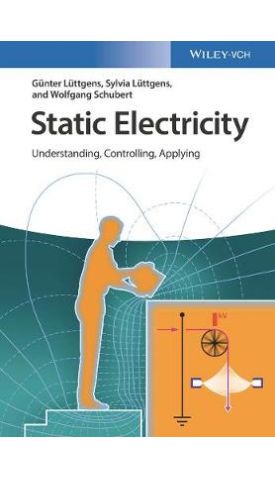אנו משתמשים ב-Cookies כדי לשפר את החוויה שלך. כדי לקיים ההנחיה החדשה של e-Privacy, עלינו לבקש את הסכמתך להגדיר את ה-Cookies. קבלת מידע נוסף.
735.00 ₪
Static Electricity - Understanding, Controlling, Applying
735.00 ₪
ISBN13
9783527341283
יצא לאור ב
Weinheim
זמן אספקה
21 ימי עסקים
עמודים
312
פורמט
Hardback
תאריך יציאה לאור
18 באוק׳ 2017
Written by world-renowned experts on the topic with many years of research and consultancy experience, this invaluable book provides the practitioners' perspective, outlining the dangers and benefits of static electricity in industry.
Written by world-renowned experts on the topic with many years of research and consultancy experience, this invaluable book provides the practitioners' perspective, outlining the dangers and benefits of static electricity in industry. The first chapter reviews the fundamentals of understanding fires and explosions in general and electricity-induced ignition in particular, while the following chapter is dedicated to the origins of static electricity in industrial settings, such as in flowing gases and the transport of disperse systems. The major part of the text deals with measuring static electricity, elimination of unwanted charges and hazard prevention under different conditions. It concludes with an overview of practical applications in chemical and mechanical engineering. Throughout the book, real-life case studies illustrate the fundamental aspects so as to further an understanding of how to control and apply static electricity and thus reduce material damages as well as increase occupational safety. Plus additional movie sequences on the dedicated website showing static electricity in action.
| עמודים | 312 |
|---|---|
| פורמט | Hardback |
| ISBN10 | 3527341285 |
| יצא לאור ב | Weinheim |
| תאריך יציאה לאור | 18 באוק׳ 2017 |
| תוכן עניינים | BASIC KNOWLEDGE OF FIRES AND EXPLOSIONS - RISK ASSESSMENT Understanding Fire and Explosion Processes Explosion Limits Ignition Hazards Due to Electrostatic Charges Comment on the Risk Assessment Classification of Hazardous Areas in Danger Zones Protective Measures with Regard to Static Electricity Methods to Determine the Ignition Capability of Gas Discharges Avoiding Explosion Hazards Constructive Explosion Protection ORIGIN OF STATIC ELECTRICITY Double Layer Discharge What Determines the Charging Amount? Charging of Flowing Liquids Attempt at Classification Charging of Flowing Gases Charging of Disperse Systems Reduction of Charging Tendency Electric Field Electrostatic Induction MEASUREMENT TECHNOLOGY Explanation of Electrostatic Measurements Voltage Measurement with Voltmeters Measuring the Electric Field Strength Measuring the Electrical Resistance of Insulating Materials Other Metrological Applications Capacity Influencing Factors Detection of Gas Discharges GAS DISCHARGES AS SOURCES OF IGNITION Gas Discharges in Electrostatics Gas Discharge Types Effects of Gas Discharges How to Avoid Gas Discharges? Assessment of Ignition Hazards Posed by Gas Discharges Damage Resulting from Gas Discharges Effects of Electricity on the Human Body ELIMINATION OF DISTURBING CHARGES Discharging of Charged Surfaces Potential Hazards from Discharging Electrodes DESCRIPTION OF DEMONSTRATION EXPERIMENTS Electrostatic Force Effects Separation Charging Charging of Particles Induction Conductivity Experiments with the Blast Tube Gas Discharges Fire and Explosion Hazards CASE STUDIES Investigation Strategy Ignition Due to Brush Discharges Ignitions Due to Spark Discharges Ignition Due to Cone Discharges Doubts About Electrostatic Ignition Experience-Led Actions PRACTICAL APPLICATIONS OF CHARGES Practical Applications Examples of Creative Implementations Summary MATHEMATICAL TOOLBOX: QUANTITIES, UNITS, FORMULAS, Appendix A: SI Units Appendix B: Derived SI Units Appendix C: Units in General Applications Appendix D: Decimal Parts and Multiples Appendix E: Symbols Appendix F: Permittivity |
| זמן אספקה | 21 ימי עסקים |



Login and Registration Form